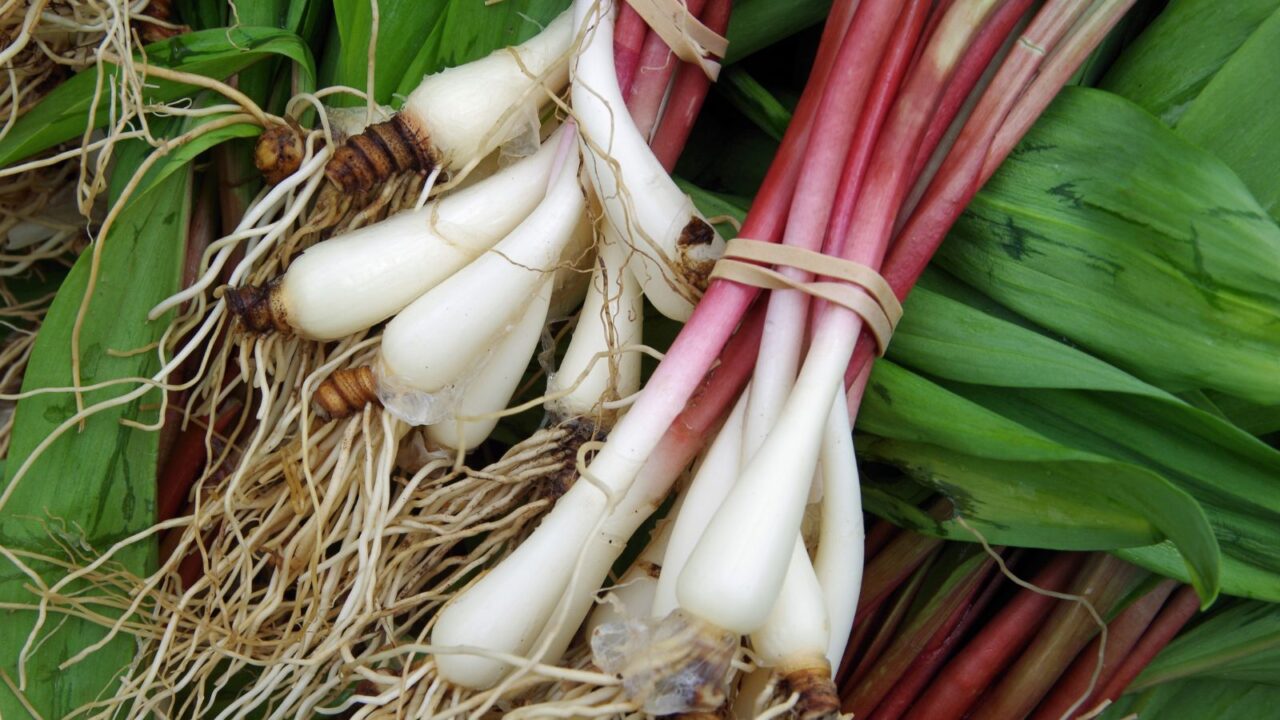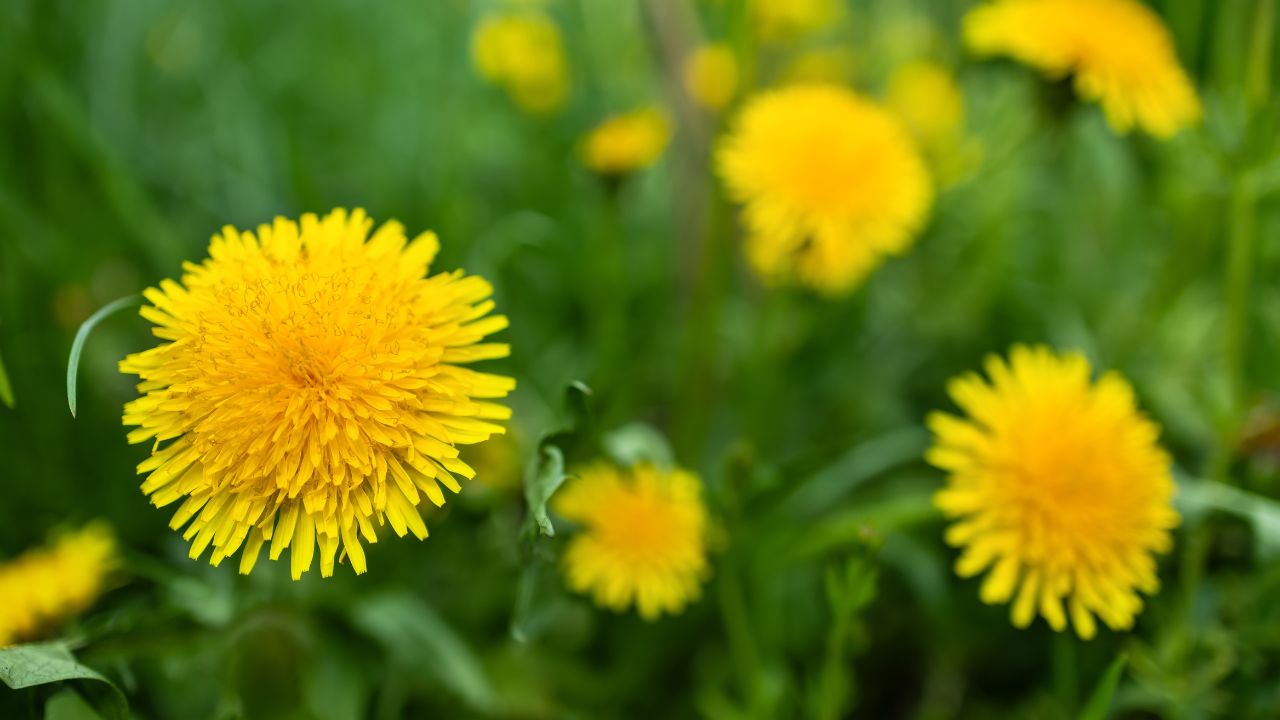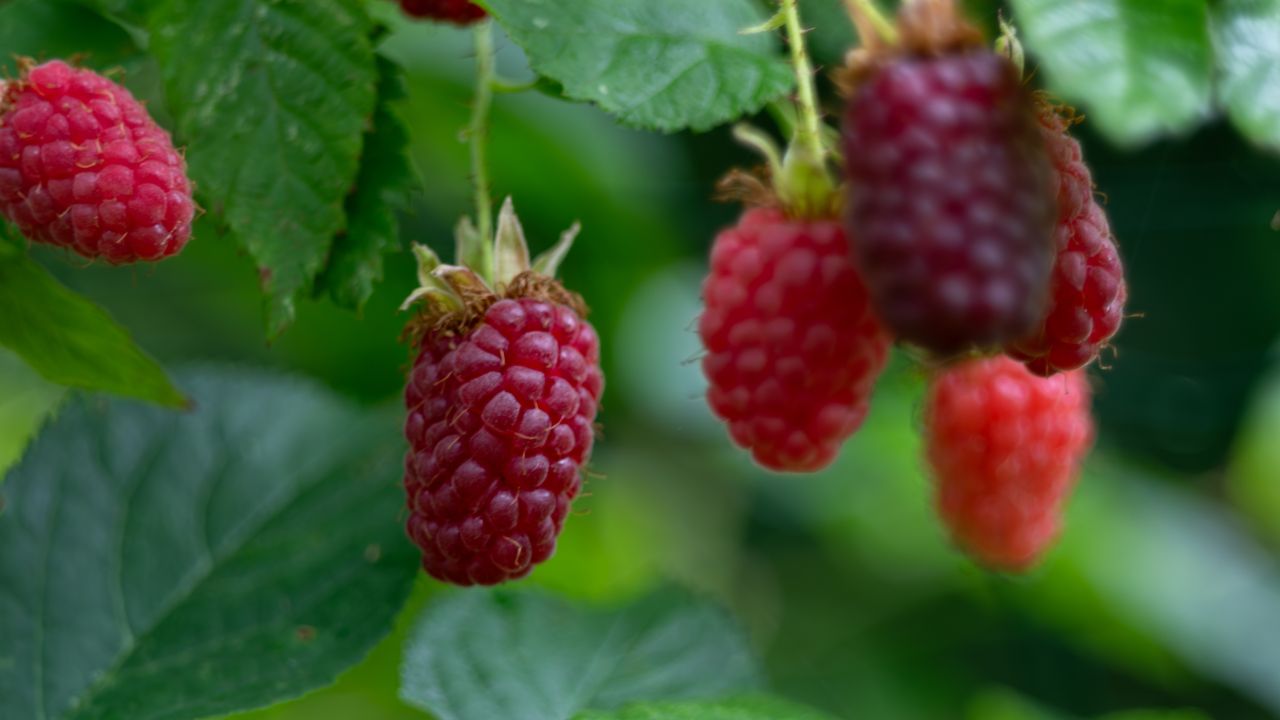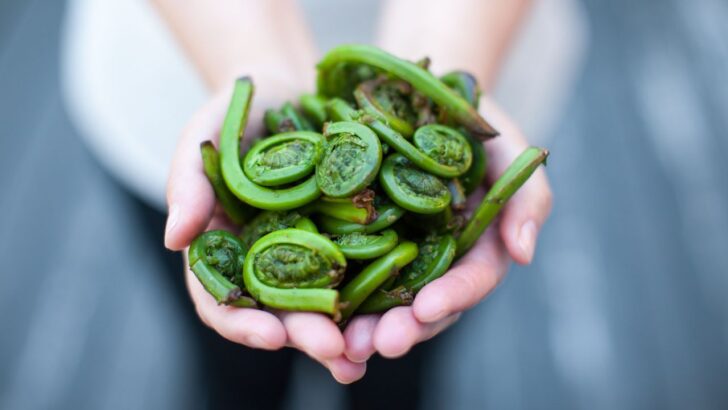Priced a pint of raspberries or a pound of asparagus lately? Fresh fruits and vegetables can seem like a luxury when skyrocketing grocery costs make it challenging to put even basic meals on the table.
Here’s a novel way to stretch your food dollars: Go outdoors and forage. You’ll get fresh, delicious food for free, plus the healthy bonus of a good walk on a nice day.
Don’t know where to start? Try your backyard if you haven’t showered it with herbicides or pesticides. Yes, you can eat “weeds.” Our ancestors did! Some of those “weeds” show up at luxury markets, marked “field greens” and cost a fortune.
Even city dwellers can forage in public spaces (parks, greenbelts) and private ones (some homeowners use apps and social media to get rid of excess produce). And sometimes you just luck into a patch of lion’s mane mushrooms.
Methodology

Image Credit: Shutterstock.
I’ve been foraging for edible treasures since I was a kid growing up in Jersey, where my family grew and gathered all of their own food. I continue to do so around my home in Alaska.
Grab your forks and start foraging as I share all my favorite foods and spots to search.
Disclaimer: Always be sure you know what you are picking and eating by consulting expert foragers and guidebooks. A mix-up can range from an uncomfortable mistake to death.
1. Ramps

Image credit: Depositphotos.
Ramps appear in early spring in wooded areas from Maine to North Georgia and parts of the Midwest. Back in the day, they were one of the first greens harvested and a true springtime tonic for winter-dulled palates.
A member of the allium family, it’s been described as tasting like a mix of onion and garlic. In recent years, foodies and celebrity chefs have been making a big deal out of this wild vegetable, which can lead to unsustainable harvesting since they take up to 7 years to grow.
If you forage ramps, focus on keeping the plant population healthy. Kimberly Holland of Southern Living magazine offers best-practice tips, including cutting the plant from the base of the root with a sharp night and keeping the roots intact for future growth.
2. Fiddleheads

Image Credit: Deposit Photos.
The emerging tips of certain ferns look a lot like the scroll of a fiddle. Blanched and then sauteed with butter and garlic, fiddleheads taste like asparagus but have an earthier undertone.
Fancy restaurants charge a premium for these things, but those who live in the right places can get them for free (primarily in the Central and Eastern U.S.). Look for them early in the spring in wooded areas, especially near water sources including wetlands, streams, and rivers.
Like ramps, fiddleheads are vulnerable to overharvesting. The Old Farmer’s Almanac can provide further information on how to identify them and harvest sustainably.
3. Dandelions

Image Credit: Shutterstock.
Dandelions contain Vitamins A, C, and K, potassium, folate, and calcium. Not bad for a weed! Young dandelion leaves are earthy and pleasantly astringent; the older ones tend to be bitter.
Due to the flower’s prolific seeding, there always seems to be a new crop somewhere. You might not have to leave your yard to forage these nutritious greens. In fact, it might be safer that way: The dandelions at a city park or along a roadside might be contaminated with pesticides or automobile fluids.
Dried dandelion root is sold as a health supplement. Harvest your own, and you won’t have to buy it. Some people use it as a coffee substitute; The Old Farmers Almanac shows you how to dry the roots and brew them.
4. Mushrooms

Image Credit: Shutterstock.
People go wild for wild mushrooms. People also go to the hospital (or the morgue) for eating the wrong wild mushrooms. If you’re lucky enough to live in the damp Pacific Northwest or NorthEast pockets of the U.S., you might already have a favorite mushroom hunting spot.
The taste is sublime, but the stakes are very high indeed. There is no substitute for a good field mushroom guide with color illustrations when foraging mushrooms.
For extra safety, look for a class and/or guided walk conducted by a local expert. You really can’t be too careful.
5. Wild Berries

Image Credit: Shutterstock.
Strawberries, blueberries, raspberries, dewberries, mayhaws, lingonberries, saskatoons, blackberries, salmonberries – if you’re lucky, some of these beauties grow wild in your area.
Some of these wild berries look small, but that’s because cultivated varieties were bred for size. Unfortunately, that practice sometimes breeds out the flavor. If you’ve ever tasted a wild blueberry, the supermarket version will seem insipid by comparison.
How do you find wild berries? In some areas, they find you; for example, Himalayan blackberries grow in massive tangles alongside Seattle streets.
Generally speaking, though, you have to know where to look. Do an online search for wild berry enthusiasts. Remember that some people are as protective of their secret berry patches as fishermen are of their private fishing holes. But you might luck out.
6. “Feral” Berries

Image Credit: Shutterstock.
Cultivated berries love to jump the fence. As noted earlier, blackberries are everywhere in Seattle. I once saw a blackberry vine coming up between two loose bricks in Red Square at the University of Washington.
If someone in your area grows blackberries or raspberries, those fruits are likely to leave the property. Birds disperse seeds, obviously, but plants will grow under or through a fence and stake out new territory. The bike path near my home is thick with raspberry bushes that began life in nearby yards.
Keep your eyes open, and get in the habit of carrying a folded-up plastic bag in your pocket or a container or two in your backpack.
7. Wild Greens

Image Credit: Shutterstock.
Depending on where you live, you could fill your salad bowl with sorrel, lamb’s quarters, wild garlic, nettle, watercress, dock, purslane, miners lettuce, and other edible greens. These greens are typically organic by definition because they grow in areas that haven’t been sprayed. (Pro tip: Freeze or dehydrate wild greens and add them to homemade soups.)
Some plants are super-regional. I’d never even heard of fireweed before moving to Alaska. These days, I put young fireweed leaves in salads and dry the bigger leaves to add to my green powder mixes.
Again, it’s vital to know what you’re doing. Pick the wrong plant, and you could wind up very sick. Look for a good local plant guide, and search online for fellow foragers who can help you learn best practices.
8. Feral Greens

Image Credit: Shutterstock.
As noted, berries love to sneak out of the yard. Other plants do, too. For example, my partner and I last grew quinoa in 2018. Yet quinoa seedlings are still popping up in our yard and a neighbor’s.
The Asian greens we planted over a decade ago continue to appear all over the yard. Any herb gardener can tell you that if you have mint once, you’ll have it forever.
Keep your eyes open in the neighborhood and along the bike path. Your neighbors’ mistakes can be your culinary gain.
9. Wild Fruit

Image Credit: Shutterstock.
Wild U.S. fruits such as persimmons, plums, and pawpaws are unique and rare. If wild fruit grows on your land, rejoice! It could also grow on a relative’s or friend’s property; ask permission, then start harvesting.
Once picked, they won’t last long. It’s simple to can or freeze plums or turn them into fruit leather. For less common wild fruits, search online for recipes (persimmon pudding, anyone?) or tips on canning, freezing, or dehydrating. Then, permit yourself to feel smug about eating such exotic treats.
10. Feral fruit

Image Credit: Shutterstock.
Avocados, figs, plums, and other cultivated fruits grow along roadways and in greenbelts in some areas of the U.S. Some may have been planted by the city, and some may have popped up on their own. (Nature finds a way.)
A handful of organizations have created guides to feral fruits, as well as fruits on private property:
- Fallen Fruit (maps of fruits and nuts in the Los Angeles area)
- Falling Fruit (worldwide maps of produce plus links to organizations that distribute food
- Portland (Oregon) Fruit Tree Project (“group harvests” organized on private property and commercial concerns)
- Urban Food Forestry (links to harvest initiatives in the U.S., Canada, and the United Kingdom
- Village Harvest (gleaning programs in 10 U.S. states and one Canadian province).
Why let the squirrels and raccoons get it all? Learn about harvesting rules in your area, then start picking.
11. Nuts

Image Credit: Shutterstock.
Some homeowners harvest every pecan or walnut that falls from their trees. Others leave them for the wildlife or rake up and discard the nuts while complaining about the chore. If you know someone not interested in harvesting the nut trees on their property, ask if you can do it for them. Or put out an “ask” on local social media for permission to pick.
Other than people’s yards, looking in more “wild” places is also an option. Free protein could be yours if you’re lucky enough to live in or near a wooded area. Depending on the region, you’re looking at bushels of beechnuts, black walnuts, chestnuts, acorns, butternuts, hazelnuts, hickory nuts, or pine nuts.
Ripe ones generally fall to the ground, so no tree-climbing is needed. Pay attention and get out there promptly because you’re competing with local wildlife that also wants free protein.
Once again, get permission to forage on private property and know the rules about picking on public land.
12. Mulberries

Image Credit: Shutterstock.
Tree fruit that looks like a long, skinny blackberry! Mulberry trees were often planted for shade in the U.S. but have also spread into the wild. They produce loads of fruit that’s both tasty and healthful. Plus, as a bonus, they ripen in waves, so you can get several harvests.
Erin Huffstetler of My Frugal Home shares that mulberries make delicious jam and can be used in any recipe calling for blackberries or raspberries. You can also dehydrate them like raisins.
A Few Pro Tips

Image Credit: Shutterstock.
If you’re ready to start foraging for free food, keep these recommendations in mind:
- Most importantly: start slowly. Get to know a few plants at a time and gradually build on that success.
- Use all the resources at your fingertips. Consider contacting your region’s Cooperative Extension System office for information on edible wild plants. Search online for local wild foods enthusiasts/groups. For example, a botany professor might lead “wild plants you can eat” hikes in the local greenbelt.
- A stretch of woods you think belongs to everyone might be privately owned. Local, state, or federal laws could exist against foraging on public land. Learn the rules in your region.
- When foraging in an out-of-the-way or downright wild area, try to take at least one other person along. Let people know where you’re going in case you get lost.
- Check the weather forecast so you don’t get caught in a storm. Even if bad weather isn’t predicted, stash a rain jacket/poncho and hat in your bag.
- Protect yourself against insects. Wasps love fallen fruit as much as you do, and they’ll fight you for it – especially if you disturb an underground nest. Mosquitoes and ticks can carry Lyme disease, Rocky Mountain spotted fever, West Nile virus, and other health hazards.
Bon appetit! And don’t overharvest the ramps.


